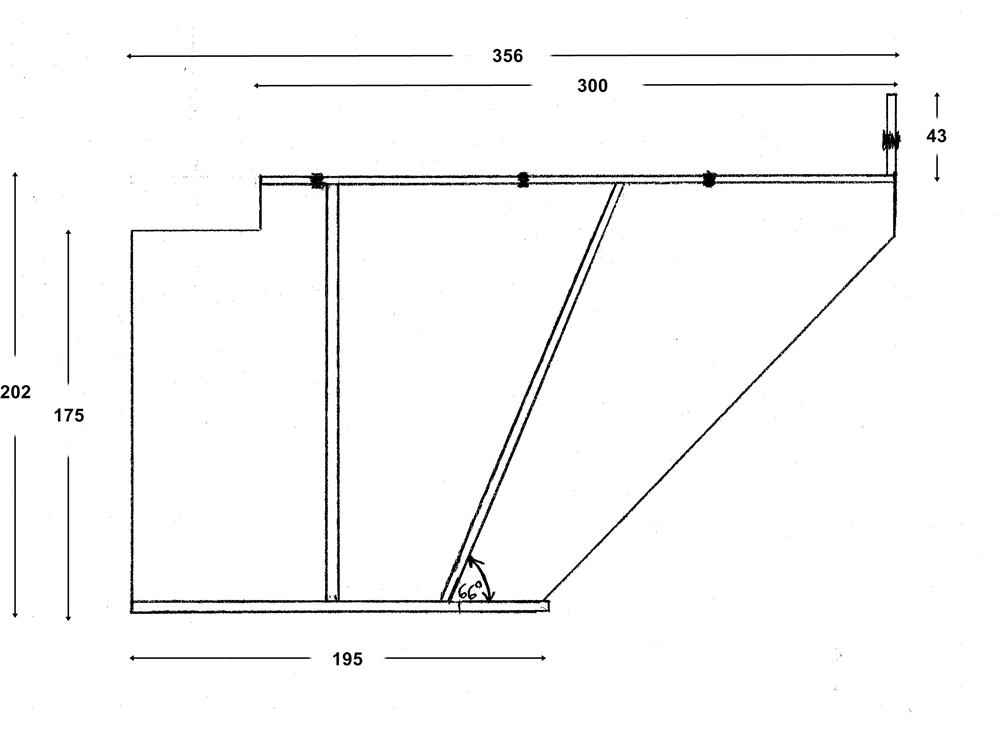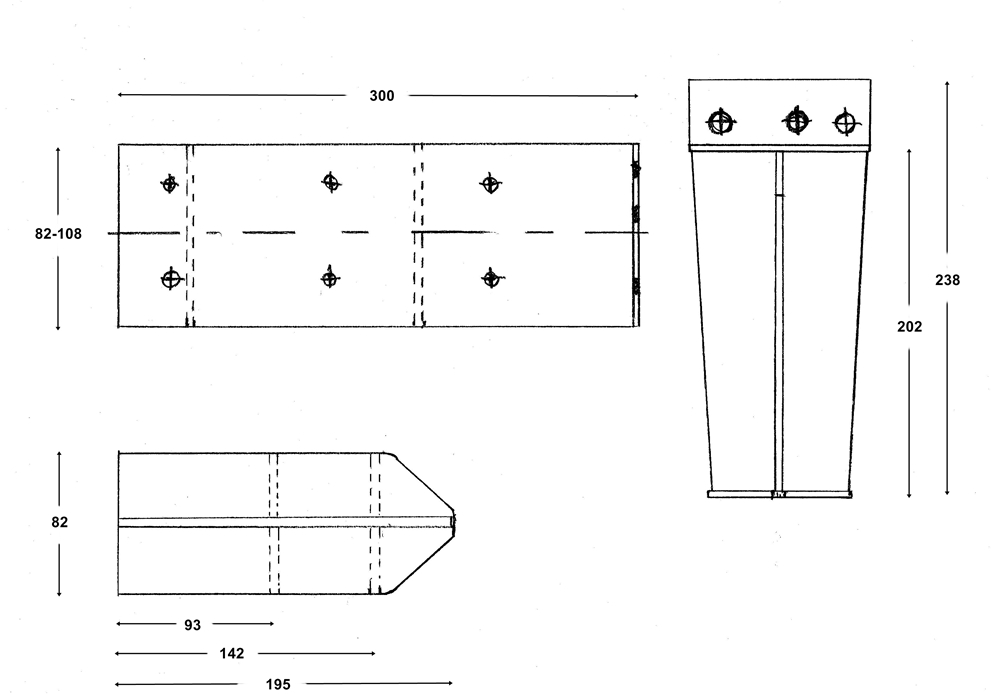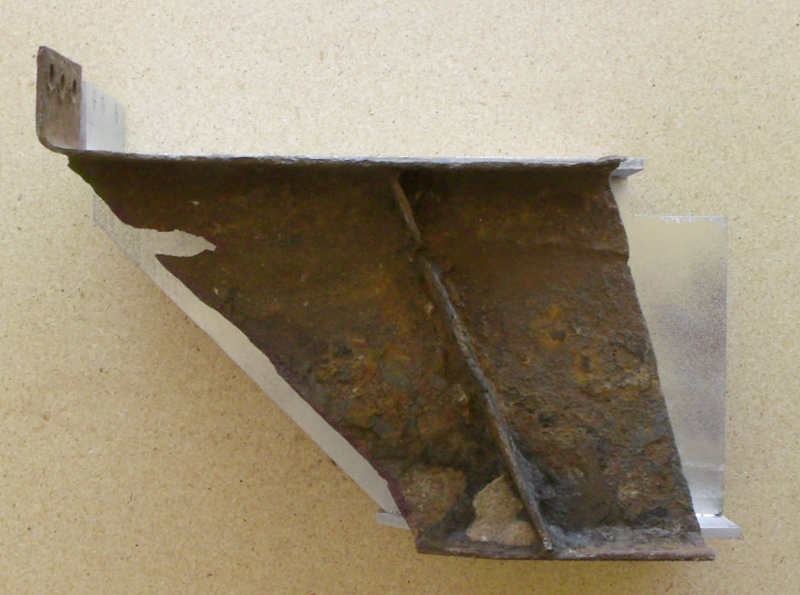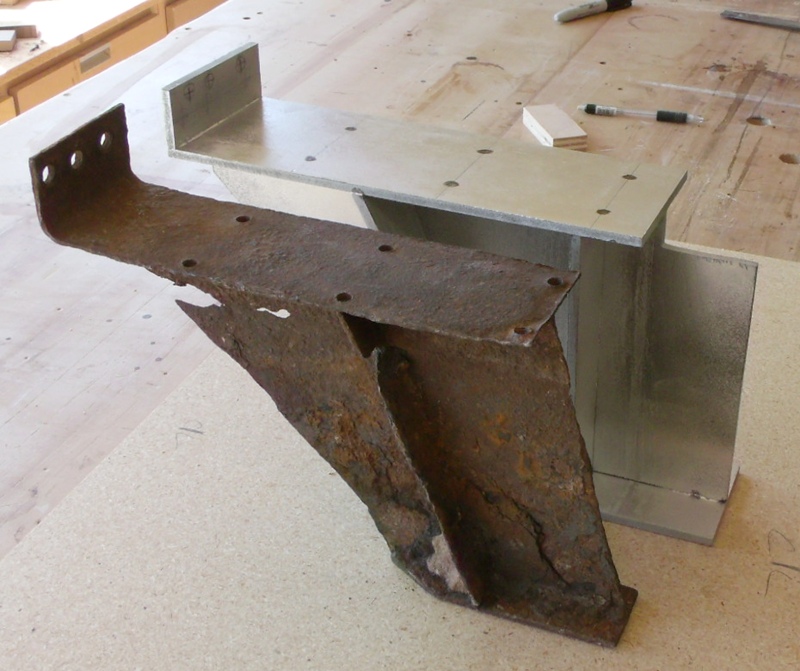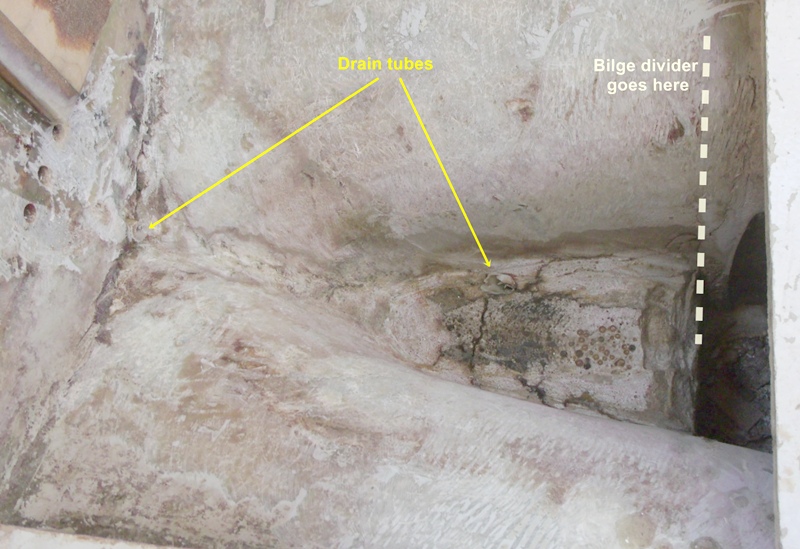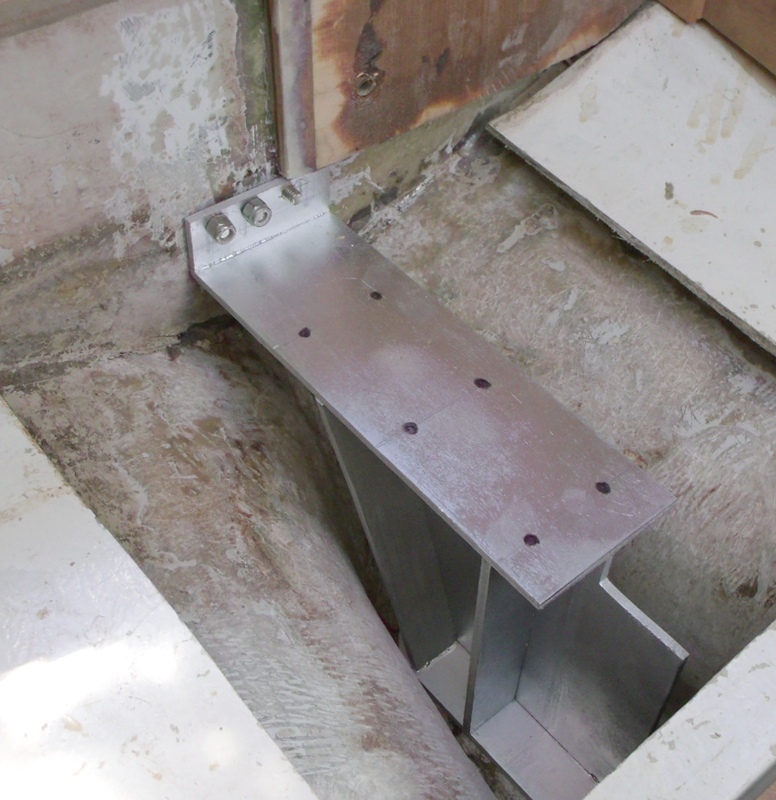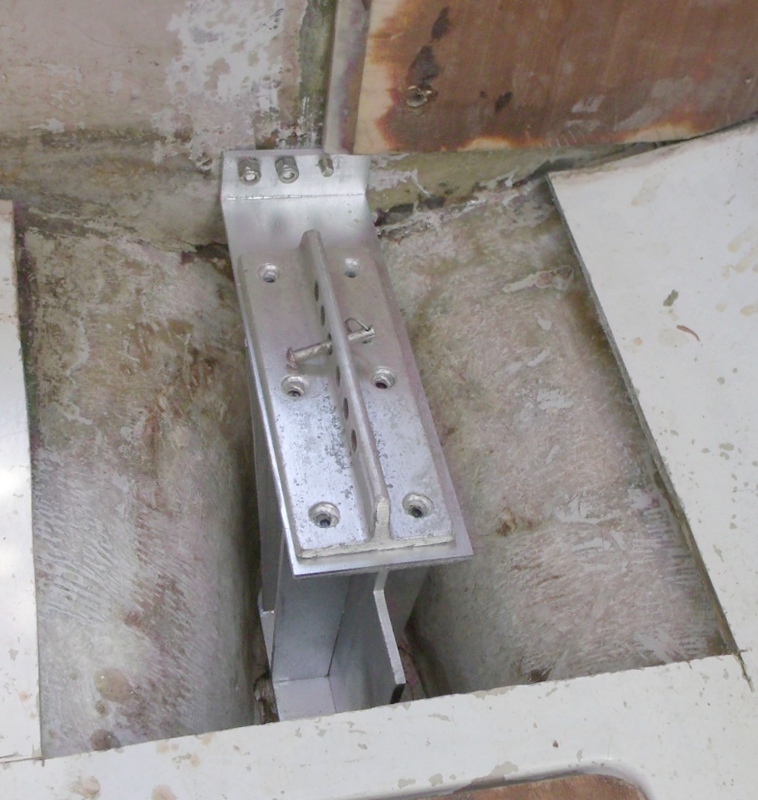Measurements of a mast step truss, taken from a physical prototype that has been fitted onto our 1972 Ballad. All dimensions in mm. A few comments and cautions:
* This truss fits our Ballad recess snugly -- main bulkhead to first bilge divider; original truss platform to underside of GRP 'cap'. It is slightly taller and very much longer than the original truss, and it is possible not all Ballads have truss recesses identical to ours.
* The foot and top plate of this design are wider than the original, to maximize bearing surface; a new GRP cap will be required after installation. If you wish to re-use the original GRP cap, you should reproduce the top plate dimensions of the original truss (c. 82mm wide).
* Materials thickness and choice will vary by owner preference. The original truss was 3-5mm mild steel (1/8-3/16"); 304 or 316 stainless of the same dimensions could be substituted with minor loss of strength. Aluminum should be roughly twice as thick, 7-10mm and 6061 where available. While I
think this design will be much stronger than the original, all present are warned that I flunked out of mechanical engineering at university.

* Rather than surrounding the new truss with solid resin, we intend to merely brace it to the keel laminates with epoxied spacers, and to bolt it fore and aft to the bulkheads. Good drainage of the foot area is still required.
* Finally, no measurements are provided for the mast base plate holes, nor for the holes attaching the truss to the main bulkhead. I will assume these are slightly different for each boat; greater accuracy will be accomplished by templating your original truss in place, then transferring the hole locations from the template to your new truss. Every 1cm error at the mast foot translates into around 6cm error at the masthead, so it is important to put the base plate exactly back where it belongs.

